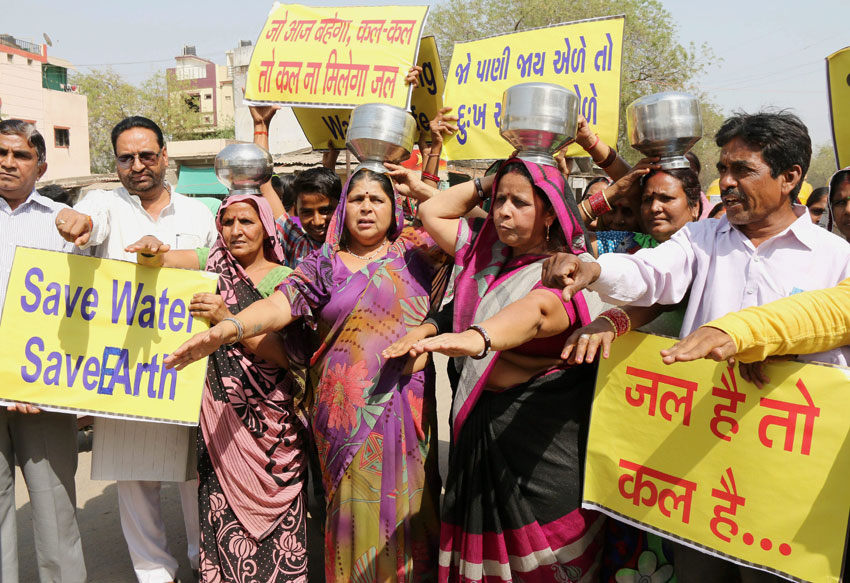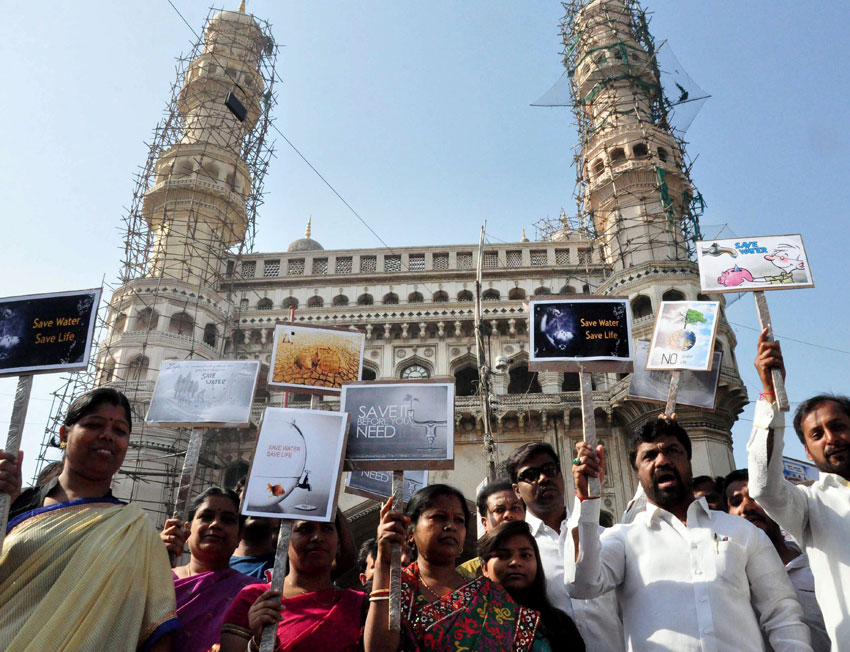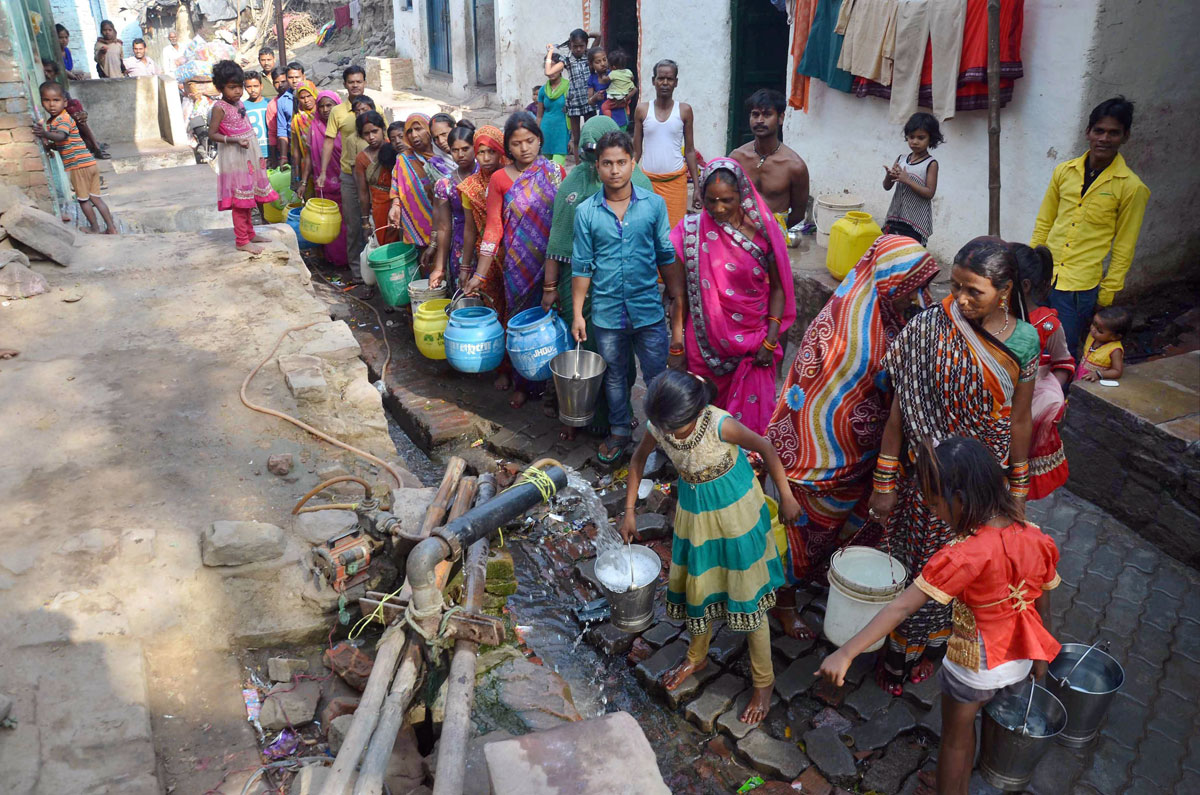Half of People Facing Water Scarcity Live in India, China
People wait in a long queue to collect drinking water from a water tap at a colony in Mirzapur, U.P., March 23. (Press Trust of India)
Half of the world’s two-third population that live in areas that experience water scarcity at least one month a year, are from India and China, a UN report said, March 22, writes Yoshita Singh. – @Siliconeer #Siliconeer #India #BJP #BharatiyaJanataParty #NarendraModi #NaMo #UnitedNations #UN #Water #WaterScarcity
The 2017 edition of the United Nations World Water Development Report, entitled “Wastewater: The Untapped Resource,” said that two-thirds of the world’s population currently live in areas that experience water scarcity for at least one month a year.
“Noteworthy is that about 50 percent of the people facing this level of water scarcity live in China and India,” it said.
The report also noted that about 500 million people live in areas where water consumption exceeds the locally renewable water resources by a factor of two. This includes parts of India, China, the Mediterranean region and the Middle East, Central Asia, arid parts of Sub-Saharan Africa, Australia, Central and Western South America, and Central and Western North America.
In several areas, from the western U.S. and southern Europe through Northern Africa and the Middle East to parts of China and India, freshwater resources are already severely stressed and service providers are struggling to meet the ever-increasing demand for freshwater.

“Reusing water enhances freshwater availability for meeting human and environmental needs and is indeed already happening in several places. Depending on its level of treatment, wastewater can be and is being used for multiple purposes, ranging from irrigation and landscaping to industrial uses, and even as a source of potable drinking water,” the report said.
Another report issued by UNICEF on World Water Day said some 600 million children or one in four children worldwide will be living in areas with extremely limited water resources by 2040.
The report ‘Thirsting for a Future: Water and Children in a Changing Climate’ looks at the threats to children’s lives and wellbeing caused by depleted sources of safe water and the ways climate change will intensify these risks in coming years.
“Water is elemental; without it, nothing can grow. But around the world, millions of children lack access to safe water—endangering their lives, undermining their health, and jeopardizing their futures. This crisis will only grow unless we take collective action now,” UNICEF Executive Director Anthony Lake said.
According to the report, 36 countries are currently facing extremely high levels of water stress, which occurs when demand for water far exceeds the renewable supply available.

Warmer temperatures, rising sea levels, increased floods, droughts and melting ice affect the quality and availability of water as well as sanitation systems.
Population growth, increased water consumption, and higher demand for water largely due to industrialization and urbanization are draining water resources worldwide. Conflicts in many parts of the world also threaten children’s access to safe water.
All of these factors force children to use unsafe water, which exposes them to potentially deadly diseases like cholera and diarrhea.
Many children in drought-affected areas spend hours every day collecting water, missing out on a chance to go to school.
Girls are especially vulnerable to attack during these times, the UNICEF report said.
The poorest and most vulnerable children will be most impacted by an increase in water stress, the report said, as millions of them already live in areas with low access to safe water and sanitation.
The report also notes that up to 663 million people globally do not have access to adequate water sources and 946 million people practice open defecation.
Over 800 children under the age of five die every day from diarrhea linked to inadequate water, sanitation and hygiene and globally, women and girls spend 200 million hours collecting water every day.
The impact of climate change on water sources is not inevitable, UNICEF said. The report provides a series of recommendations that can help curb the impact of climate change on the lives of children.
It said governments need to plan for changes in water availability and demand in the coming years and need to prioritize the most vulnerable children’s access to safe water above other water needs to maximize social and health outcomes.


